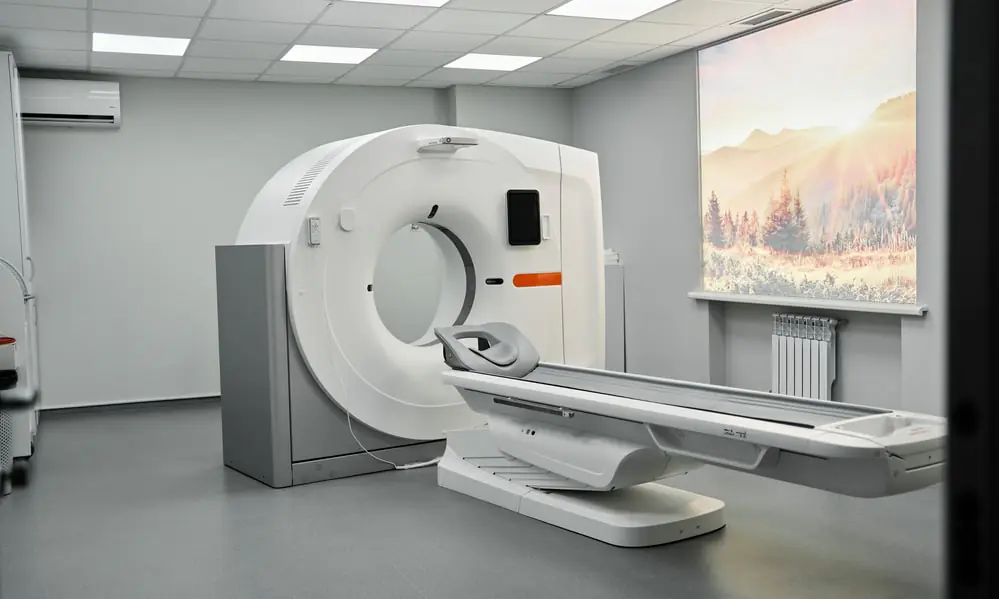
No matter where our life journey leads us, bumps and scrapes will inevitably arise. Imaging techniques such as X-rays and MRIs (Magnetic Resonance Imaging) become invaluable diagnostic tools when medical emergencies arise – although both techniques are widely utilized within healthcare environments, they do differ significantly in how they can help. Many people have this common question in mind “What can an MRI show that an X-ray does not?” To determine which healthcare facility is better suited for you, we’ll delve into the nitty-gritty details of MRI and X-ray technologies. Here we will discuss their uses and when one might be more appropriate than the other.
Understanding Of X-RAYS AND MRIs
Before discussing how X-rays and MRIs differ from each other, it’s essential to have an in-depth knowledge of these technologies.
X-Rays: What Are They?
X-rays are electromagnetic radiation similar to light rays but with much higher energy. Used extensively in medicine since 1895, X-ray machines send individual X-ray particles through the body from one end. The detector, on the other end, captures images based on how much rays were absorbed by various tissues based on density. For instance, dense tissues such as bone absorb more X-rays than less dense organs or muscles and therefore appear whiter on radiographs.
Advanced Urgent Care offers x-ray services with experienced staff and state-of-the-art equipment for quick, comfortable, and accurate imaging.
MRIs: A Different Approach
On the contrary, magnetic resonance imaging (MRI) utilizes an entirely different technology. In lieu of employing radiation, MRI utilizes radio waves as well as magnetic fields to create detailed images of your inner body. The role of the magnetic field is to align protons in the body. When radio waves are applied, protons absorb energy and dissipate it as soon as they are turned off. Eventually, this energy release is captured and transformed into images by an MRI machine.
What Does An MRI Show That An X-Ray Does Not?
This is the heart of our discussion, and understanding this difference will help you know which technology is better for your specific situation.
The Ability to Visualize Soft Tissues
One of the primary advantages of an MRI over traditional X-ray imaging is its ability to produce detailed images of soft tissues–like muscles, ligaments and the brain. If your diagnosis involves soft tissue damage such as torn ligaments or brain trauma, an MRI might be the right choice.
Sports medicine uses MRIs to diagnose knee and shoulder injuries. Not just that, neurology uses this technology for conditions such as stroke, tumors and multiple sclerosis.
More Detailed Bone Imaging
Although X-rays are typically an effective means of imaging bones, there may be instances in which an MRI becomes the better choice for imaging the bone marrow and therefore providing more detailed bone images than X-rays alone can. An MRI provides more granular imagery, which may prove vital when diagnosing conditions like infections, cancer of the bone marrow, or injuries not visible on an X-ray image.
When To Choose X-Rays?

While MRIs offer a myriad of benefits, X-rays also have their own set of unique advantages.
Quick and Easy Imaging
X-rays offer quick and straightforward imaging solutions that are widely available, often being faster than an MRI procedure – making X-rays an ideal tool for initial evaluations.
Better for Certain Types of Injuries
X-rays can be extremely effective at spotting any abnormalities in bone structure. This makes them the go-to choice when diagnosing fractures, infections, or diseases such as lung cancer or pneumonia, where differences in tissue density make the problem areas clearly visible.
Making A Choice: MRI Or X-RAY?
When making a choice between an X-ray and an MRI, the focus should not solely be on which technology is superior but which best suits your unique situation. Your healthcare provider will select an imaging method based on various criteria— including your body part being examined, symptoms present, and overall health condition status.
Keep in Mind
Safety
Although X-rays use ionizing radiation, repeated exposure can pose potential health risks. By contrast, MRIs do not emit radiation, making them safer options for pregnant women or individuals requiring frequent imaging. Unfortunately, the strong magnets that are used in an MRI machine may not be appropriate for individuals with certain implants like pacemakers.
Cost
MRIs tend to be more expensive than X-rays. If an accurate diagnosis can be obtained using only an X-ray, it should be your first choice.
Specific Diagnosis
Ask yourself this key question: “What can an MRI show that an X-ray cannot?” An MRI may be your ideal diagnostic option if the answer involves soft tissues or more detailed bone images.
Get the Right Imaging for Your Condition
Both X-rays and MRIs are highly effective tools in modern medicine. The choice between the two depends largely on the specific diagnostic needs of the individual. Always discuss with your healthcare provider to ensure the best imaging method for your unique situation.
Advanced Urgent Care of Pasadena offers a range of immediate healthcare services, including X-ray facilities. We stand ready to assist you with any critical health emergencies 24/7. Feel free to contact us; Call Now at (626)-304-0404!

